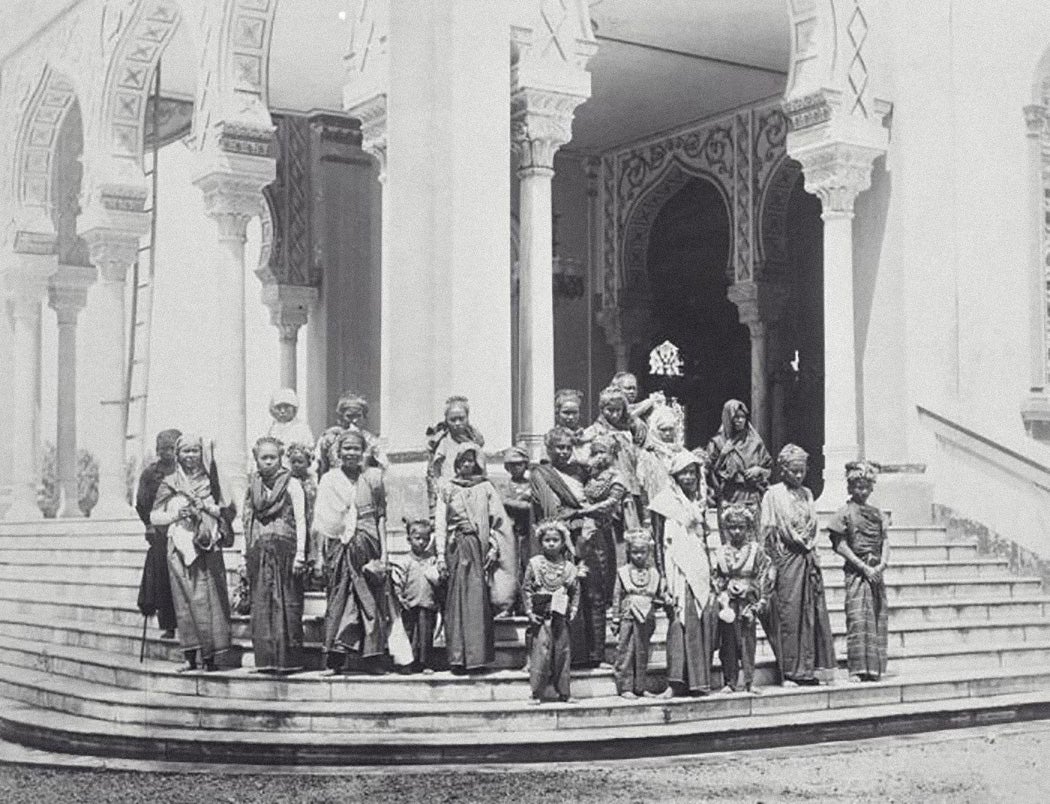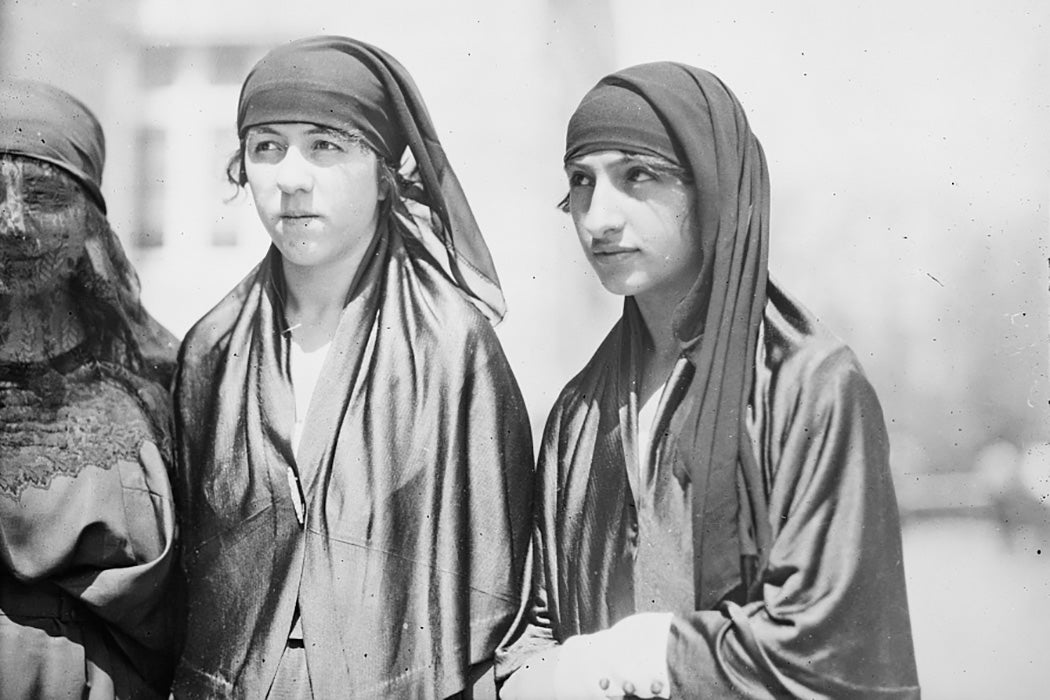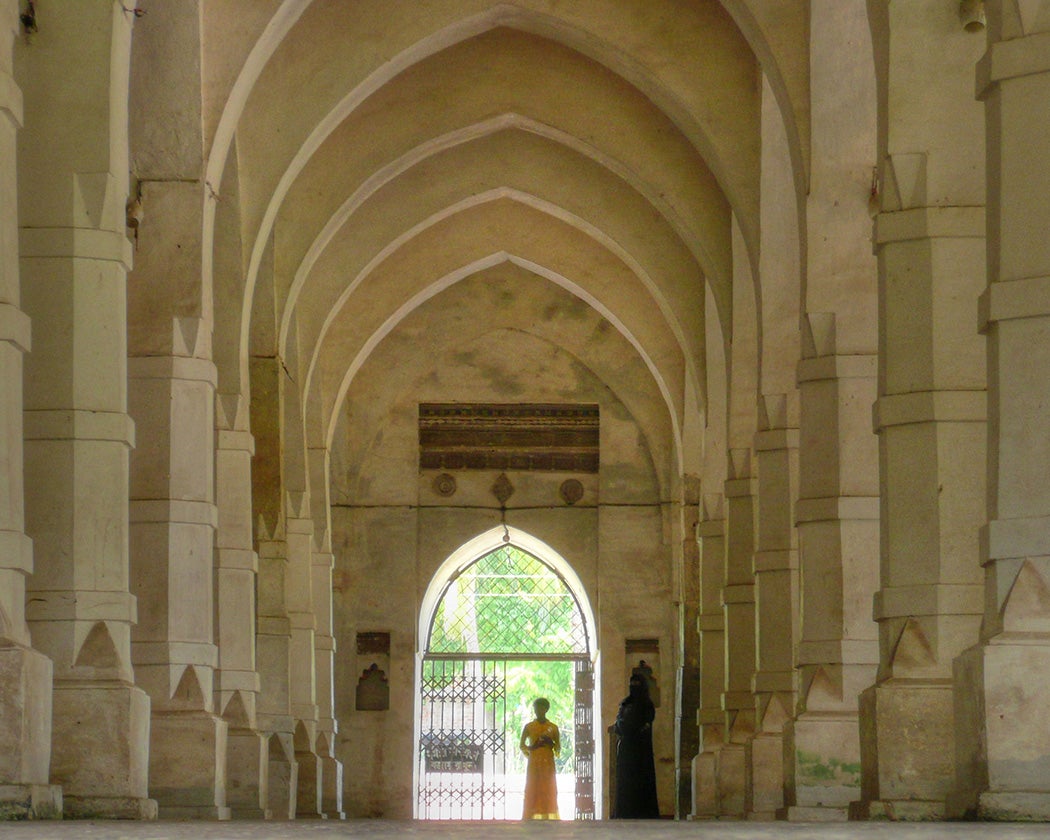Muslims have observed three Ramadans so far under pandemic conditions. Community is vitally important during the holiday, and negotiating its loss has been a challenge for many believers, including the women who participated in a 2020 study about Muslim practices during COVID-19. Some expressed frustration with power dynamics in traditional mosques, where women have been historically marginalized in both spatial and political terms.
To address that marginalization, Muslim activists have taken up the charge of advocating for women-inclusive and women-only mosques. Asra Nomani, an American Muslim woman of Indian heritage, has long campaigned on behalf of herself and other Muslim women for a better-quality worship experience and improved access for them to mosque governing bodies. The brains behind the “Islamic Bill of Rights of Women in Mosques,” Nomani states that women have the Islamic right to enter mosques through the main door and worship in musalla, the main sanctuary freely and without physical barriers or screens. She also advocates for the right of women to hold leadership positions, lead prayer, and address the whole congregation. In short, she argues for women’s full participation in religious life. The salience of Nomani’s position is reflected by the unequal access of women to mosques and governance in different cultural contexts such as the United States, the United Kingdom, Norway, Egypt, and Indonesia, although for many women the main issue isn’t access to leadership, but securing welcoming women-only prayer spaces in their mosques. In some mosques women are completely unwelcome; in others, they are relegated to basements or balconies lacking in audiovisual and other multi-media tools that would facilitate full participation in worship.
Weekly Newsletter
Many Muslim women respond to this state of affairs and claim the right to make use of mosques through everyday acts of resistance: they defy regulations and cite Islamic texts that refer to women’s unfettered access to prayer spaces in the times of the Prophet. Amina Wadud and Jamida Beevi, have gone further; they have directly opposed male religious authority by leading prayer in both women-only and mixed gender settings. The rise in the number of women’s only and queer mosques in the West suggests that these acts of defiance are becoming a part—if small—of the norm.
Though innovative, the idea of a women’s mosque is not entirely new. In early Islamic history, pious women were allowed to lead prayer in women-only and family gatherings. A’isha, one of the wives of the Prophet Muhammad, offers one example of such a leader. Jump forward several centuries to the establishment of the first women’s mosque as a dedicated public space in China, over 300 years ago. Led by ahong, female Chinese Muslim religious leaders, such mosques are traced to women’s schools that were vital for the survival of the Muslim diaspora in China. A persecuted religious minority, Chinese Muslims strove to preserve their distinct identity. The contributions of this community were key to the effort to prevent the assimilation into the majority Chinese society. It was these women who were able to provide Islamic education to their children in both their homes and in specialized gender-segregated religious spaces. This strategy required careful balancing as it went against strict Confucian social mores that would have women exist almost exclusively in the domestic sphere.
By contrast, in Sudan women’s increased mosque participation and spontaneous religious organizing is a means of claiming agency in a country governed by an Islamic revival movement. Women’s mosque-based groups allow legitimization of women’s presence, mobility, and knowledge in a context where the rights of women have been severely restricted. Rather than disavowing religion altogether, becoming more religious in the formalized sphere of the mosque granted many Sudanese women more agency.

In Somalia, another African country, a women’s mosque was erected in a small town of Gabiley in 1972. In Gabiley, Qur’anic schooling was a prerequisite for entering secular education delivered at a local school. As the sole local madrasa accepted only boys, girls’ path to both religious and secular education was foreclosed. Under these circumstances, and in face of local opposition, the women of Gabiley led the construction of their own mosque. They did so under the leadership of a female leader, Sheikh Marian, and with financial support of women who lived all over the country and as far away as neighboring Djibouti. Since its completion, the women of Gabiley have been able to worship in a designated space, study Islam, congregate socially, and have a base for social welfare initiatives, such as offering shelter to refugees and women who are unhoused. During the civil war years (1988 to 1994), the mosque structure itself was damaged by shelling. In the years since, it has fallen into disrepair and the men of Gabiley have refused to lend a hand in its rehabilitation. Though the mosque n was still serving as a women’s prayer space as recently as the year 2000 under the management of an all-women committee, its current status is unknown. In spite of this, the founding of a women’s mosque was an important and radical project, as it opened up a space where women and their religious authority could be centered and allowed to flourish without male oversight, rather than marginalized as is the case when women are relegated to inferior spaces in male mosques.
In the Maldives, an island country on the Indian ocean with a 100% Muslim population, more than 250 women’s mosques are believed to have existed for over a century. In 2009, they were all closed by the country’s Ministry of Islamic Affairs, citing high maintenance costs and low usage. Government officials claim that these mosques were first established only in 1979 by the state-sponsored National Women’s Committee in preparation for a United Nations Conference on Women in 1985, but oral accounts suggest that they operated, unacknowledged, for many decades before that. Regardless of their origins, for the period that they were in use, these mosques provided an essential public space where women could pray, study Islam, and hold community functions. Like mainstream mosques, they were regulated by the government, and their mudahim (female caretakers/prayer leaders) were employees of the state. Before 1979, women became mudahim informally through mentorship, and by self-educating themselves in Islamic practice. They were not only religious leaders, but also midwives and individuals responsible for preparing women’s bodies for burial.
The fate of women’s mosques such as those in the Maldives or Somalia has never attracted global headlines. Those that have are located in Western Europe and North America: for example, in Copenhagen, Denmark, and Los Angeles. The leaders of these Western women’s mosques are careful to trace the history of female religious leadership to their predecessors, including the Hui Chinese female religious leaders and women who led prayer in the time of the Prophet Muhammad. It is important that they are able to argue that women’s mosques are not new; this allows them to claim historical legitimacy and authenticity. It also is an important premise for arguing that Islam is a gender-egalitarian religion, and the patriarchy that exists in Muslim communities is a result of cultural influences, which can and should be challenged.
When Imama Sherin Khankan founded the Mariam mosque in Copenhagen in 2016, she did so with the goal of providing Muslim women with a space of their own to worship, as they have historically been unwelcome in mainstream Danish mosques. Another, more far-reaching aim, is to challenge patriarchal interpretations of Islam. To this end, the leadership at the Mariam Mosque has drawn up a marriage charter that asserts the following principles there: polygamy is forbidden; women have the right to divorce; psychological or physical violence constitutes grounds for divorce; and women have equal rights over any children after divorce. Many of these notions contradict conservative understandings of Islam, and the Mariam Mosque has been criticized by the chairman of the Leicester Muslim Forum, a prominent British organization, as a “mischief-making operation” lacking in Islamic grounding that attacks traditional values. Despite the opposition, since 2016 Mariam mosque has engaged two more imamas, with Somali and Malaysian backgrounds. The mosque is open to Muslims and non-Muslims of all genders but the Friday khutbah (sermon) is exclusively for women.

Relegation of women to less-desirable spaces similarly triggered the establishment of the Women’s Mosque of America in Los Angeles in 2015. At the same time, the mosque is also driven by the wider goal of promoting Islam as an egalitarian faith. WMA was co-founded by Sana Muttalib and M. Hasna Maznavi who said that they wanted to create a space in which women could celebrate their role in their religion. Edna Leković of the Muslim Public Affairs Council took that thought still further. “Our intention is to help women read the Quran and interpret the scriptures and tradition for themselves,” she said in the mosque’s inaugural sermon. “We’re doing this with an eye on empowering women to serve the broader Muslim community.” Similar to Mariam Mosque, WMA offers women-only sermons, but leads co-ed educational programs, recognizing that gender equality programs should be directed to everyone.
Rabi’a Keeble, an African American Muslim woman who founded the Qal’bu Maryam Women’s Mosque (later reinvented as the Women’s Justice Center), in Oakland, California, was interested more in running a women-led institution that caters to all those affected by different oppressions: racism, sexism, homophobia, and Islamophobia. Women lead the prayers of the co-ed congregation. In a 2018 interview, she told me:
“I didn’t just want to have the same thing that we already have. And that is a segregated mosque…I’m not going down that route because I believe that the other purpose for a women’s mosque besides the place for women to get together is to educate men. And I think it’s the best place to educate men, around women, because we’ve had men teachers, we’ve had men scholars, we’ve had many mosques – we’ve had all this for centuries, and I don’t think we’ve gotten very far, in terms of a lot of important social, social issues that we have. We haven’t gotten very far. So I think it’s like a crucible for creating this new Islam, like almost a reformation.”
Keeble’s observation is important insofar as she addresses the problem of gender segregation in American-Muslim religious spaces beyond the spatial dimension. She hopes to integrate all Muslims within a social-justice framework. Indeed, some criticism leveled at women’s mosques points out that they reinforce patriarchal practices in mainstream mosques through further gender segregation. While admitting that exclusion of women is indeed a problem in traditional mosques, some have argued that rather than directing energies to opening “exclusivist” spaces, activists should be working to transform the existing ones. Yet, these strategies do not have to be mutually exclusive. Many Muslim women feel that they need safe and fulfilling religious spaces now, and power inequalities in traditional mosques are likely to be entrenched. Quite possibly places like the Mariam Mosque, WMA, and Qal’bu Maryam Women’s Justice Center will remain unusual as places of worship, but long term, they may serve as inspiration for reimagining current reality.











